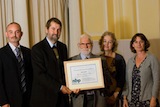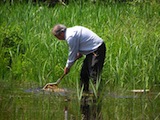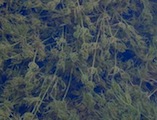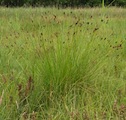News
LOHP wins Norfolk Biodiversity Partnership Award

LOHP wins Norfolk's Norfolk Biodiversity Partnership's Site Award: we are very grateful to the Norfolk Biodiversity partnership for this recognition of the project's work in restoring, recreating and reuniting important wildlife sites in the upper Little Ouse Valley. The award was presented on 30th September, at a ceremony in the Norwich Assembly Rooms, by Steve Scott, East of England Regional Director for the Forestry Commission.
Year of Biodiversity - Water beetle mania

A recently-commissioned survey of water beetles and bugs underlines the importance of LOHP sites for rare wetland species. Specialist Geoff Nobes found 67 species of water beetles including 5 rarities designated 'Red Data Book' species and 12 'Nationally Notable' rarities. Even the new scrape at Parkers Piece, completed just over a year ago, had 37 species of beetles and 11 water bugs. At Hinderclay Fen, small pond dug by LOHP volunteers a year ago had 33 species of water beetles, some of them national rarities, as well as the Nationally Rare minute water cricket.
Year of Biodiversity - It's official!

It's official - the Little Ouse Headwaters are a Nationally Important Area for Stoneworts! A recent survey of stoneworts (Charophytes) on the LOHP sites shows that we have at least five different species. These large, highly structured aquatic algae are mostly restricted to the calcareous waters of fenland sites. Many of them are very rare. They are called stoneworts because a stoney layer of calcium carbonate is deposited over their surfaces.
Year of Biodiversity - getting to grips with grasses

LOHP volunteers joined national expert Arthur Copping for a day demystifying the identification of grasses, sedges and rushes. Our sites have a rich variety of species in these groups. An ability to identify them is cricial in our assessment of the importance of a site and the way in which it responds to restoration manangement.

